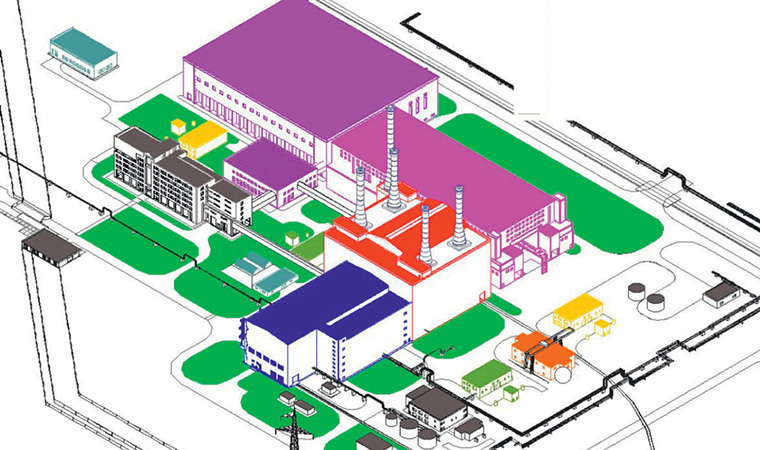
The realistic future
back to contentsAccording to Vyacheslav Pershukov, Deputy CEO at Rosatom, the major achievement last year was transition from the preparatory stage to actual construction. In Seversk, Tomsk Region, Rosatom has begun construction of a pilot lead-cooled fast reactor, called the BREST-300, which will have a solid nitride fuel fabrication and refabrication unit. “The project design development, which took five years, is partly over, and we are about to begin the construction stage,” said Mr. Pershukov.
Unique fuel
Rosatom is the first organization in the world to have manufactured an experimental batch of new nitride fuel and has started irradiation of several fuel assemblies. “Skeptics kept on telling us that new fuel development would take at least 30 years. We did it in just two and a half years and have already unloaded the first fuel assembly. Post-irradiation tests are about to start,” Mr. Pershukov reported.
According to Vladimir Troyanov, Chief Technologist of the Project, the first nitride fuel fabrication unit was built at the Siberian Chemical Plant, and now it produces four fuel assemblies annually. Another fabrication unit will go into production later this year. “We have also made the step from lab re-processing to larger-scale production. We have substantially resolved all of the major fuel re-processing issues,” said Mr. Troyanov.
Key R&D achievements of the Breakthrough Project were summarized by Valeriy Rachkov, R&D Director, “It is a huge amount of work. There are three fundamental innovations – new fuel, new coolant, and a new equilibrium core,” he stressed.
Cost conscious
The Project is focused on making fast reactor technology competitive. Fast reactors are now able to compete both with conventional reactors and gas-fired power stations. “Our task is to reduce capital expenditures to match the global industry best practice. After we complete construction of the pilot reactor, we will have all the proof that the closed nuclear cycle is a competitive technology. Efficient solutions are already clear to us,” said the project manager.
According to Evgeny Adamov, Science Director of the Project, certain achievements have been made in this field. For instance, an entirely new steam generator design has been developed for the BN-1200 sodium-cooled reactor. It is as safe as its predecessors, but cheaper.
Ahead of the world
The Science Director is sure that Russia is a global leader in fast reactor technologies. “Many countries have suspended their fast neutron programs,” says Mr. Adamov. Apart from Russia, France is the only European country to continue developing these technologies.” Asia is trying to catch up – with Russian assistance and design, the Chinese have built CEFR, their first fast reactor. The Koreans are working in the same field, too. However, Rosatom is ahead of the world, drawing on a long succession of fast-neutron technology developments made since the mid-20th century.
Vyacheslav Pershukov stressed that Rosatom is open to international cooperation within the Breakthrough Project. “We sense growing interest in our technology around the world. Rosatom representatives speak at every IAEA conference on the future of nuclear energy. Every year they say that the closed nuclear cycle is real, and the most efficient path to development of the nuclear industry. The technology has begun to win recognition at the international level,” the Science Director noted.




